-
I am Xtreme

Teamgroup T-Force Xtreem - quick A0 chips
Memory chips are becoming cheaper and also at higher frequency and even more affordable. Such most effective today are kits between 2933 to 3200 MHz, probably the best part for selecting the price /performance ratio. Ideal for Intel 8. + 9th generation processors or even Ryzeny 2nd+3rd generation.
But what if u need more? Example if you are enthusiast or overclocker? I have today memory kits from Teamgroup more specifically T-Force division. And I will try it on Maximus XI Apex board.
DESCRITPION
As an interesting model I chose TeamGroup, T-Force Xtreem 4133 MHz. The frequency is solid, but it has also interesitng XMP profile. It is 18-18-38-2T on 1.4V!
Compatibility list is here z (but propably it will be working on more motherboards fine): https://www.teamgroupinc.com/en/cata...t=1&index_id=2
This series of memory kits has reached in 2017 many records in OC, even today in 2019 is it impressive result = 5280 MHz. Is it possible that todays CPUs with a little better IMC could get more ( i7-8086K or i9-9900K)...
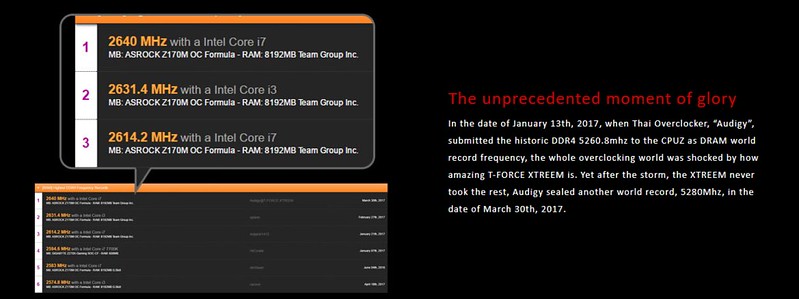
See the illustration for complete specifications. Size of memory kits are 48mm on height, 9mm widht. The cooling is taken care of a truly honest piece of aluminum, here was not spared as on some memory kits (where there is only a thin sheet).

My kit is manufactured in 43. week of 2018. If I am looking on PCB seems like Samsung B-die chips in A0 revision. Thus, they are predestined for tight timing at frequencies around 4000 MHz.
SPD info in BIOS

Memory have a lifetime warranty, and inside is it sticker "T-Force"

The packaging of the memory is both a specification and a design award from last year and another from Computex 2017. The other side explains that T-Force belongs to Teamgroup and belongs to the enthusiast segment.
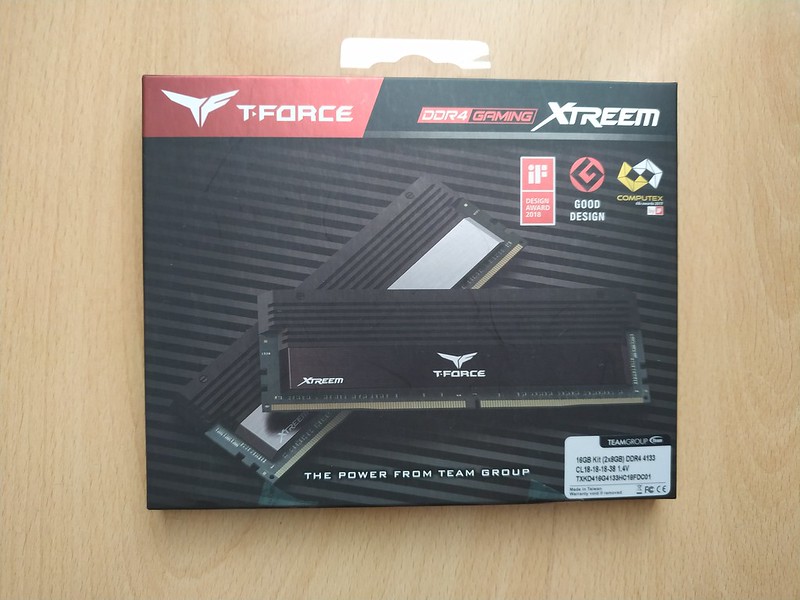
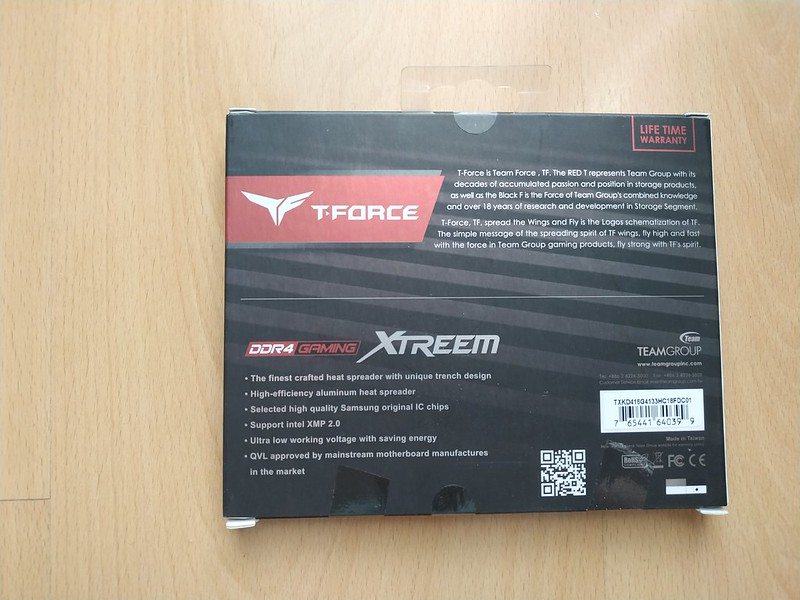
This kit looks greeat. Photos are more than many words 




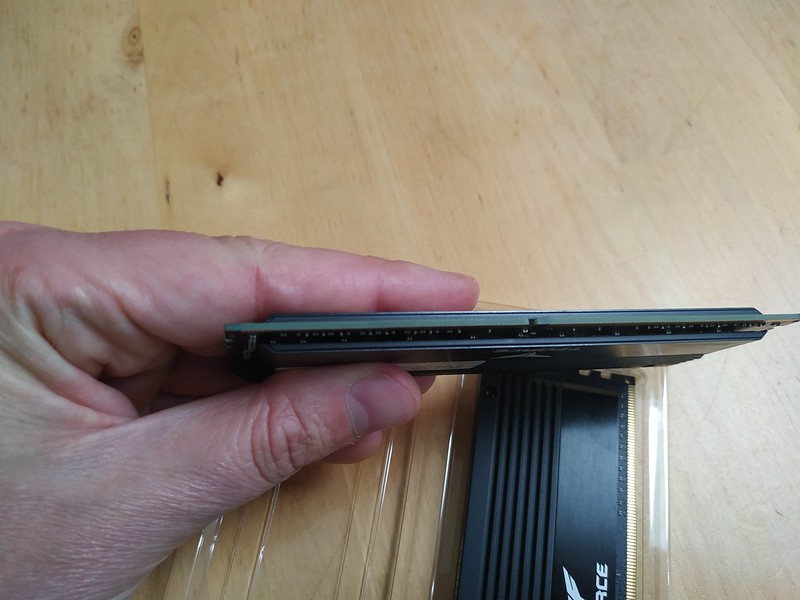
Memory chips are on only once side of PCB, it is better for OC of the memory and less stress for your IMC in CPU.
TEST RIG
For the tests I chose for someone unusual Windows 7, but let's believe that it is not yet completely dead operating system!

CPU: Intel Core i9-9900K (average silicon), set on 5000 MHz CPU and 4700 MHz cache.
Motherboard: ROG Maximus XI Apex
Memory Kit: T-Force Xtreem, XMP 4133MHz
PSU: Crosair AX1200
Cooling on CPU CPU: ROG Ryujin 360
GPU card: ROG Strix GTX1050 O4G
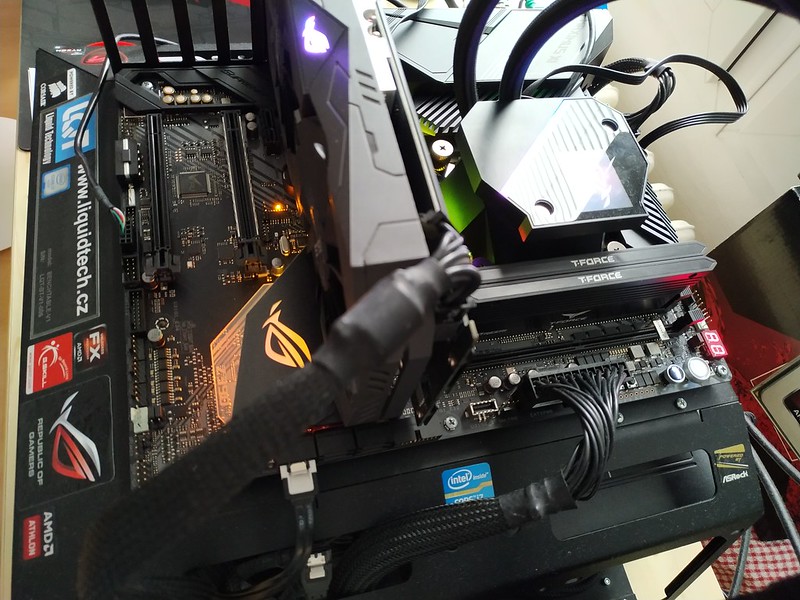
HOW I TESTED
I first tested with Windows 7 by default. First time by specifics for Intel Core 9900K, thats mean RAM at 2666 MHz, after I choose 3200 MHz, (ideal standard performance situation for most of users). RAM prices started to fall this year...nfinally I tried XMP profile I. and XMP profile II. The second is optimized for ROG boards. And I was wondering what it would bring in the practice of another. Then I tried to go even further, where I got a relatively safe voltage of 1.55-1.6V on DRAM. Gradually I tested benchmarks:
Superpi 32M, lower time is better in this oldschool benchamrk
Geekbench 4: Higher score is better
3D Mark11 Extreme "Physic score" - CPU performance and also depends a little on RAM
AIDA64 - memory and cache bandwith test, higher results are better
Memory Mark - memory subtest, higher score is better

Other tests have gone beyond the folk field and have focused only on the Superpi 32M and Geekbench4 single thread. The maxmem size for the system there was 4 GB. Why? Because with tight timings and high frequency together you need to do this :-) Of course, there was a need to work with DRAM voltages above 1.9V, I dared to go to 2V on DRAM and on memory controller to 1.35V.[highlight=yellow]Be sure not to try this at home if you have no ideaabout the memory chips on different RAMs and the knowledge of processor memory controller.[/highlight]
RESULTS WITH NORMAL WIN7
2666 MHz
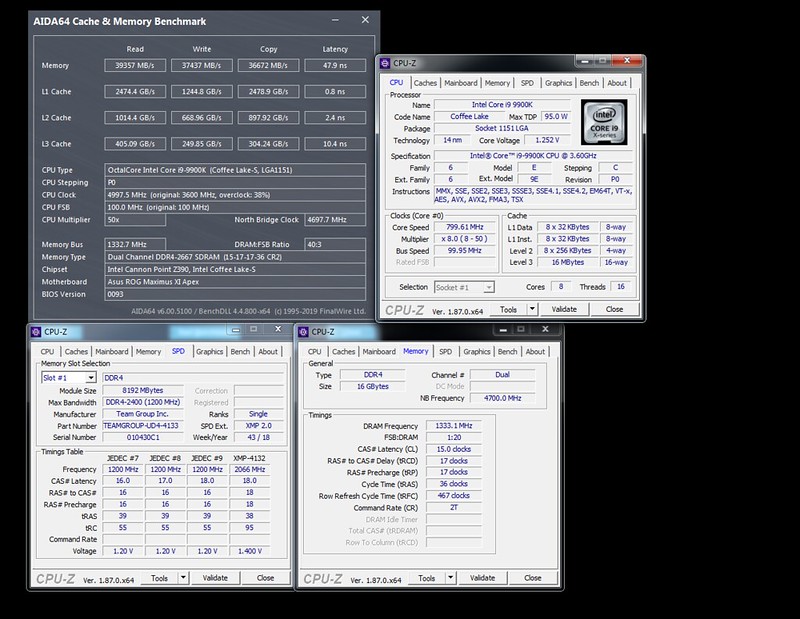


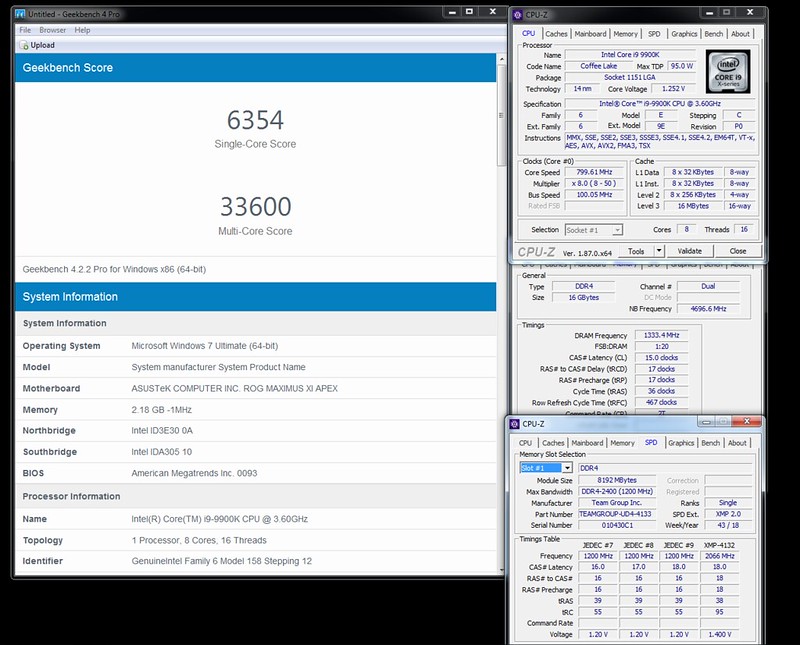

3200 MHz - typical memory performance todays - 3200 MHz kits are good performance/price ratio

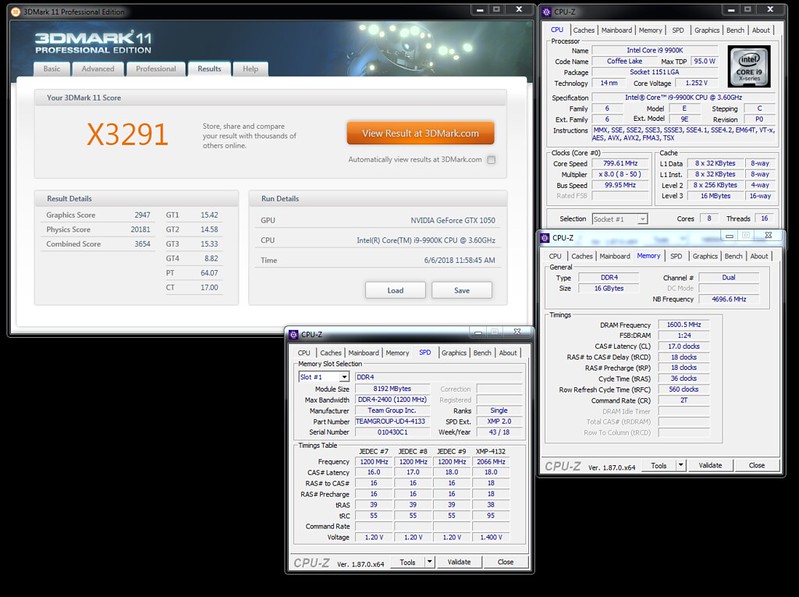


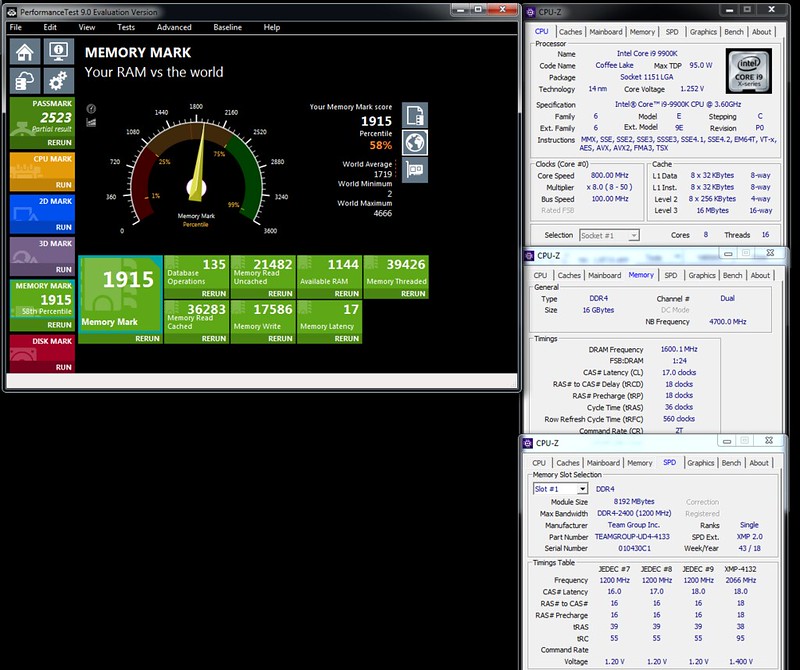
4133 MHz 1.4V XMP I.
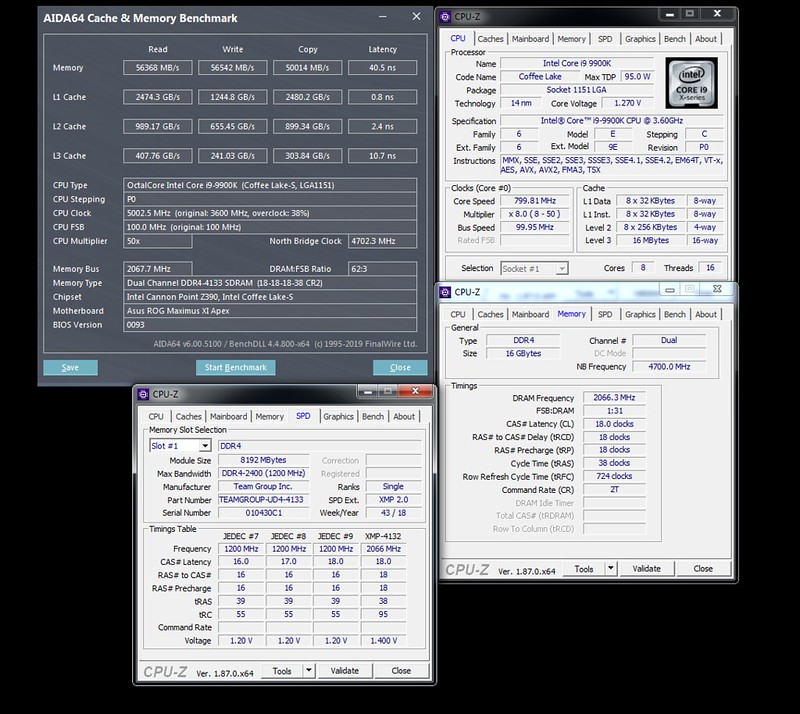
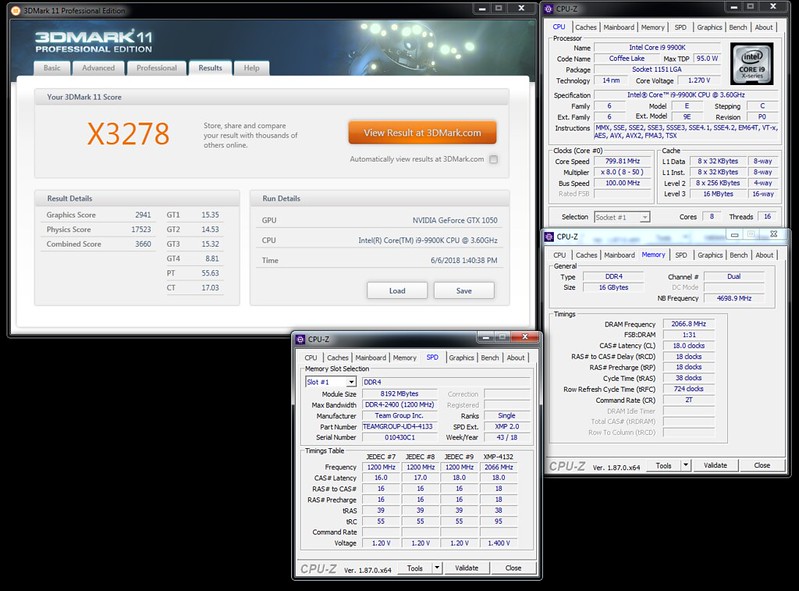
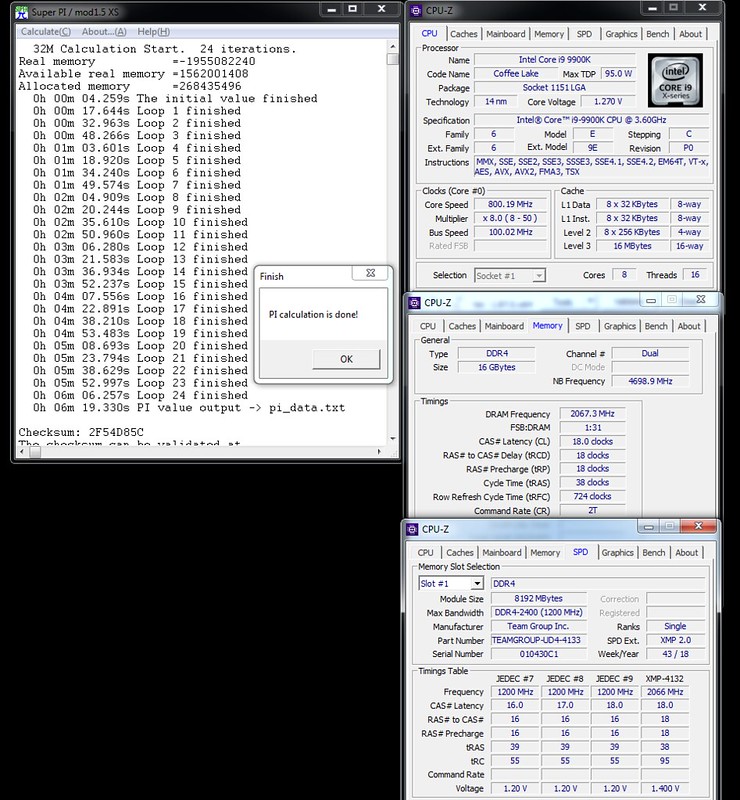
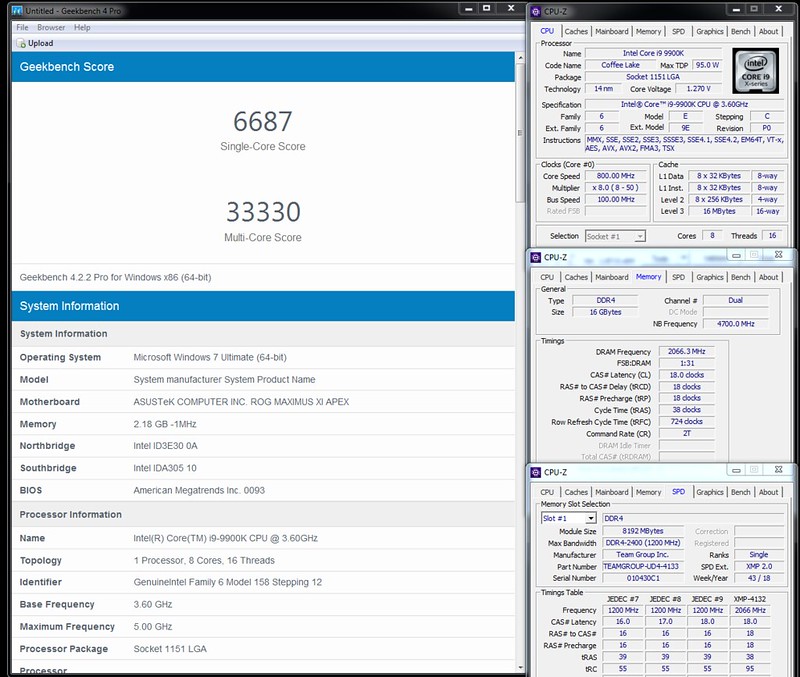

4133 MHz 1,4V, Asus XMP II.
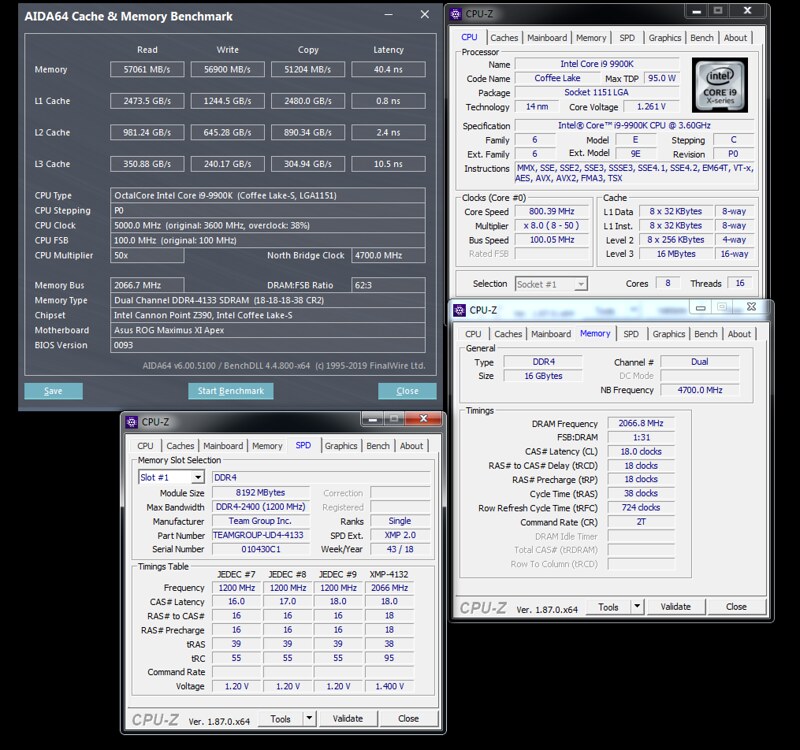



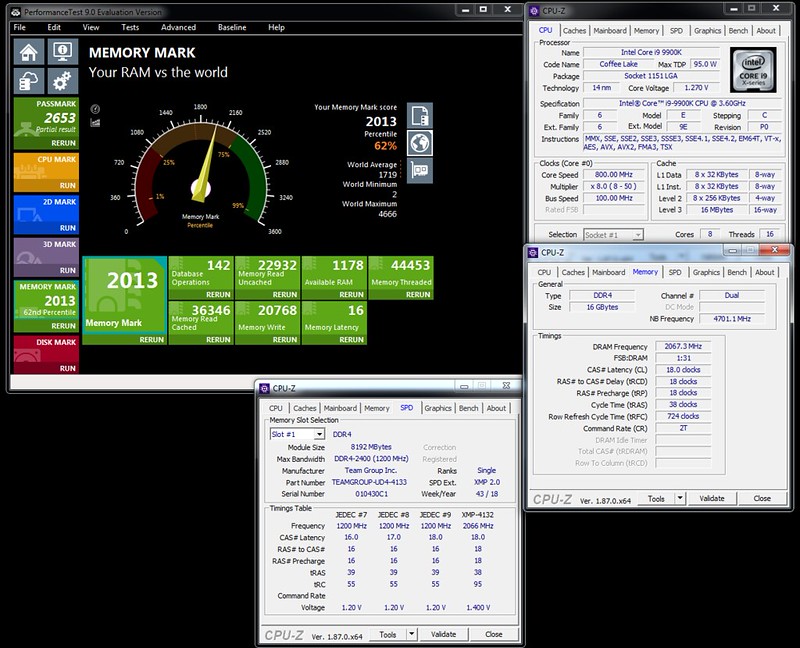
4266 MHz 1.45V = overclock

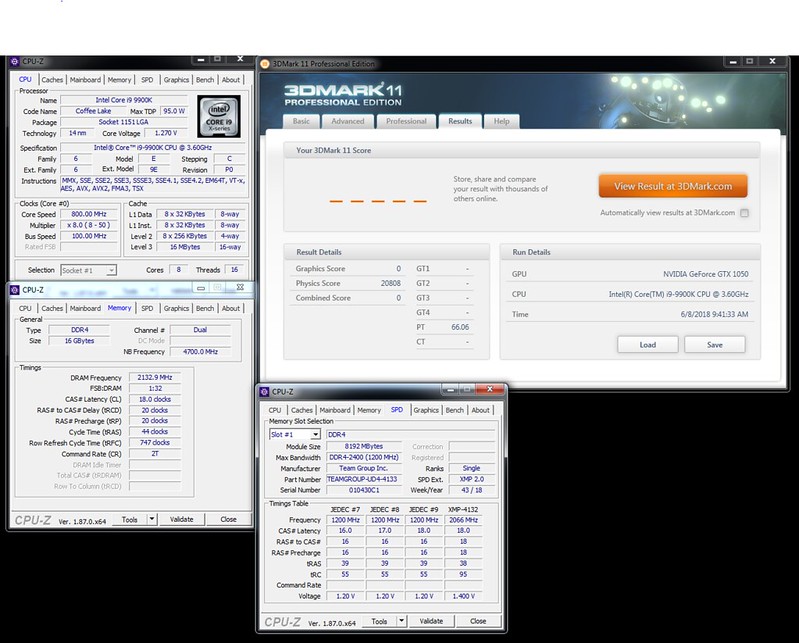
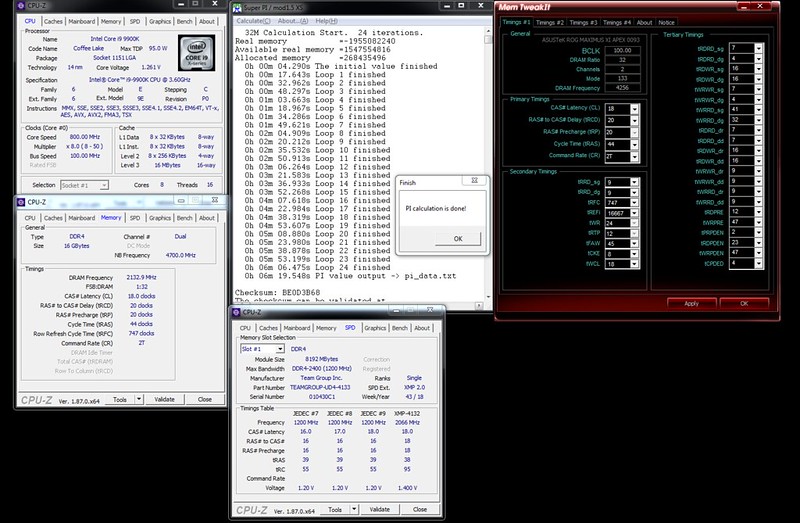
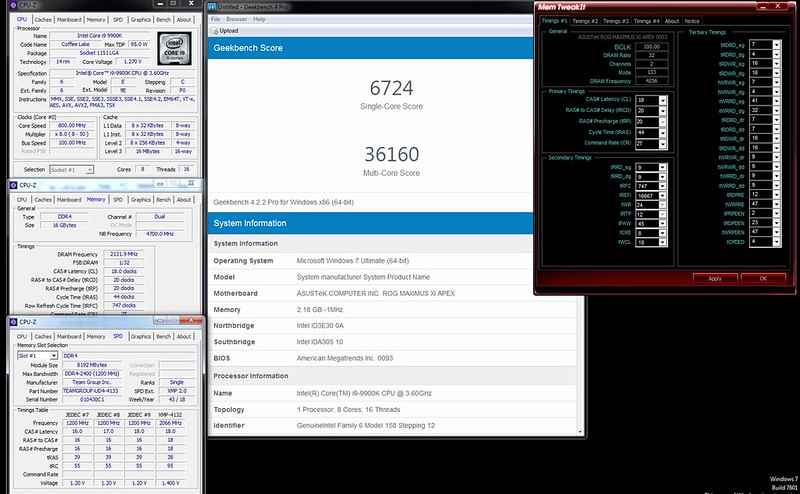
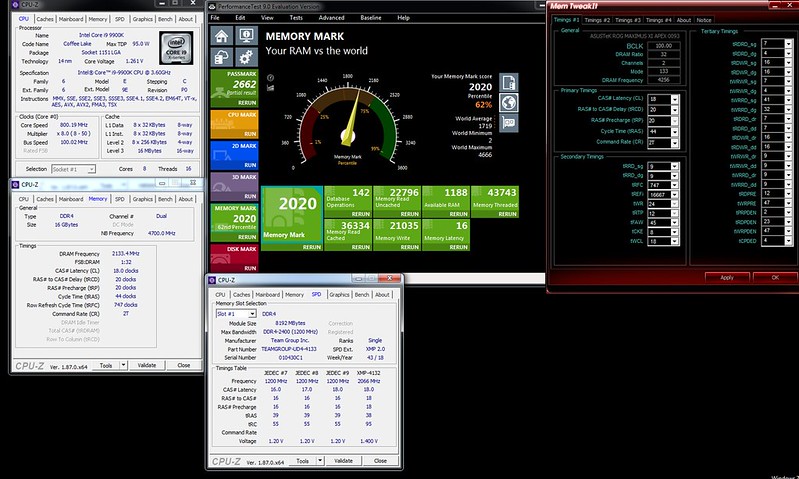
4500 MHz 1.55V = overclock max stable

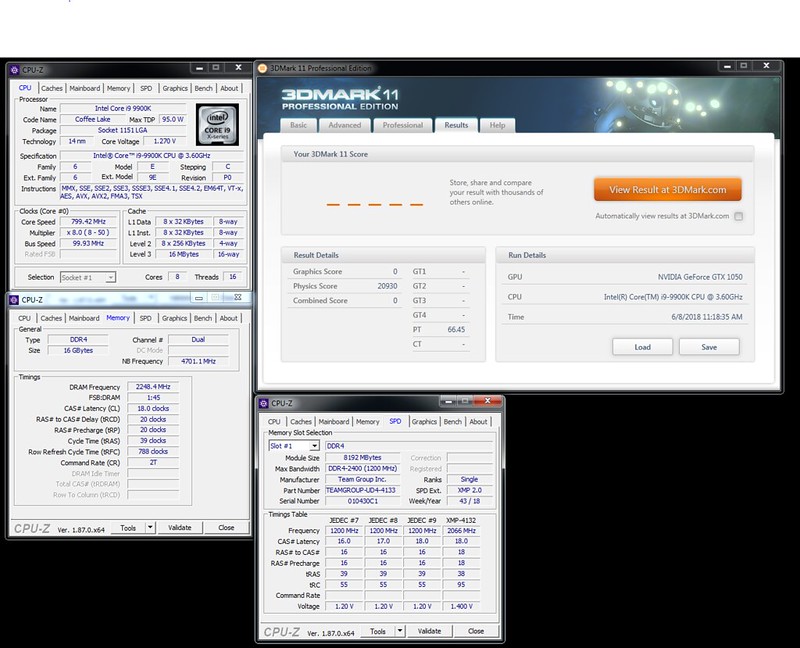
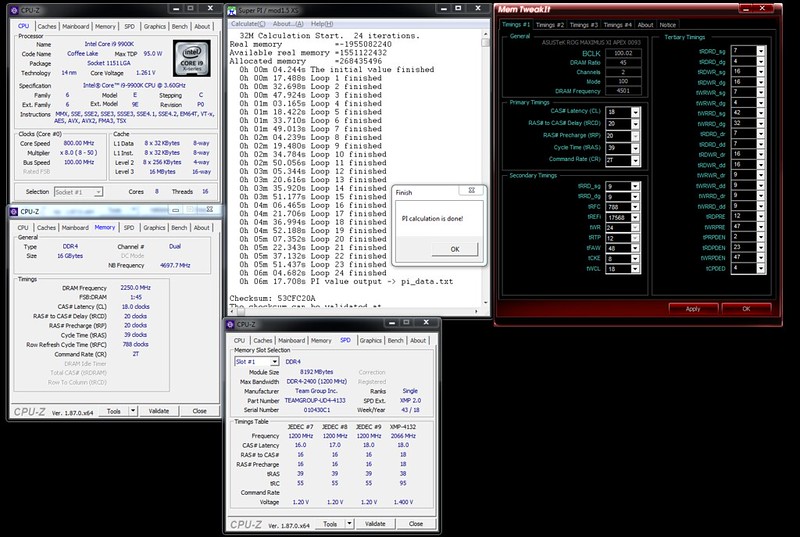
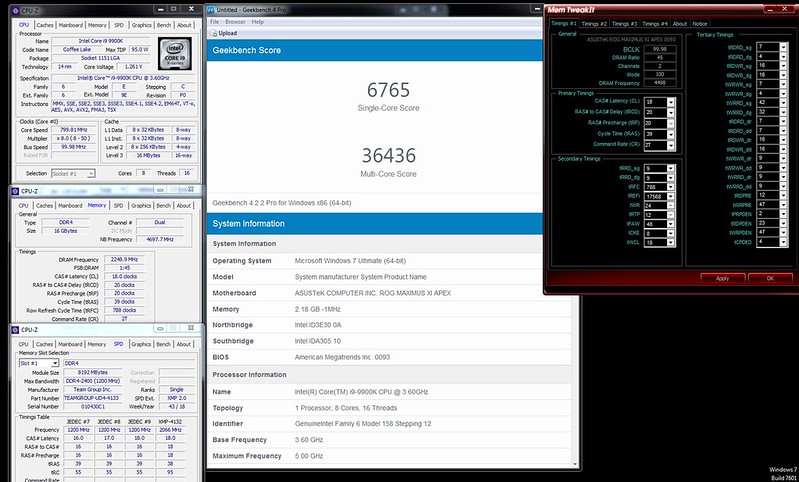
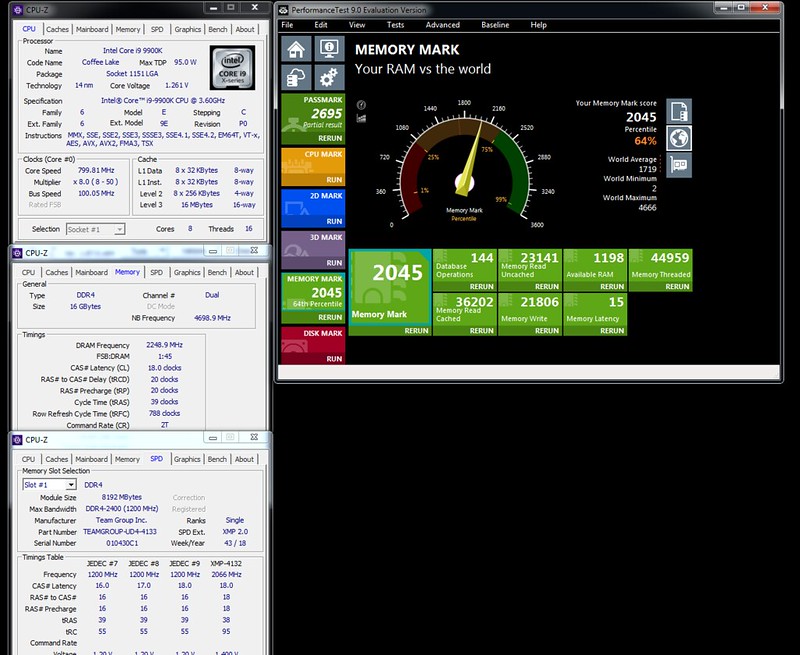
RESULTS WIN7 WITH MAXMEM 4GB (for extreme OC)
I have done these tests somewhat randomly. CPU was set again on 5000 MHz and later I used those memory for quick LN2. CPU cores were limited at 3C/3T for better staility.
On 3866 MHz and timings? 12-12-12 was not problem. On 4000 MHz I had issues. I could boot to the Windows, but eg. in Superpi I got error.
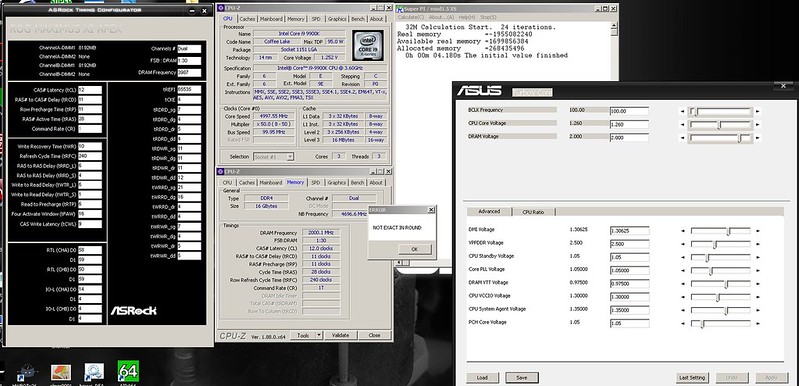
Im thinking it is not the memory issue, but some wrong setting in tertiary timings or in RTL/IOL settings. In future I would like to retest again, but last weeks I am very limited with free time. Of course, I will be glad for any tips and so on from more experience guys here. Without it, is it very time consuming. Example I found how sensitive is VTT DDR voltage against DRAM voltage.
[highlight=yellow]Tests on 3866 MHz and 5 GHz CPU[/highlight]


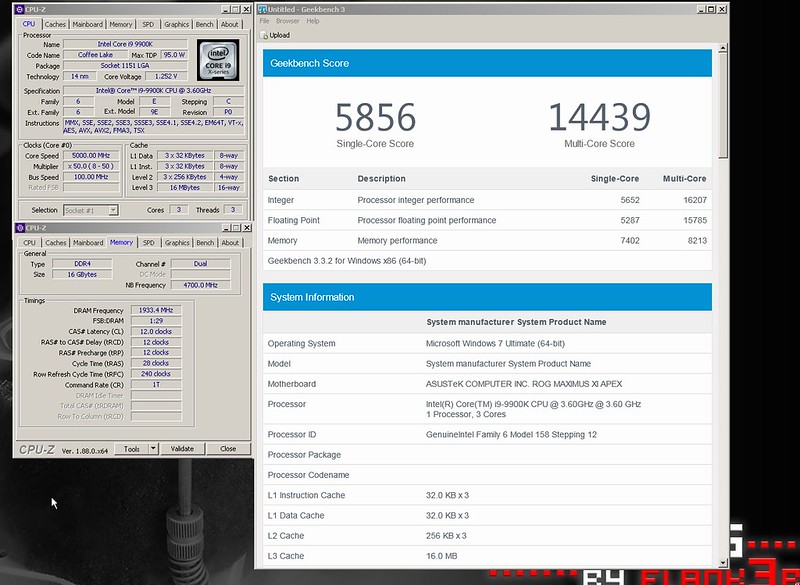
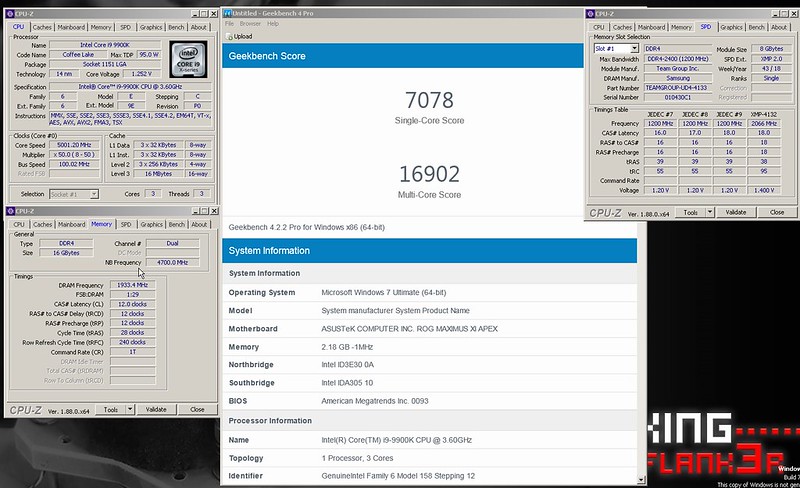
Oba dva Geekbenche maj? profit z frekvence a časov?n? pamět?
Superpi 3950 MHz 12-12-12-28 and 3980 MHz 12-12-12-28
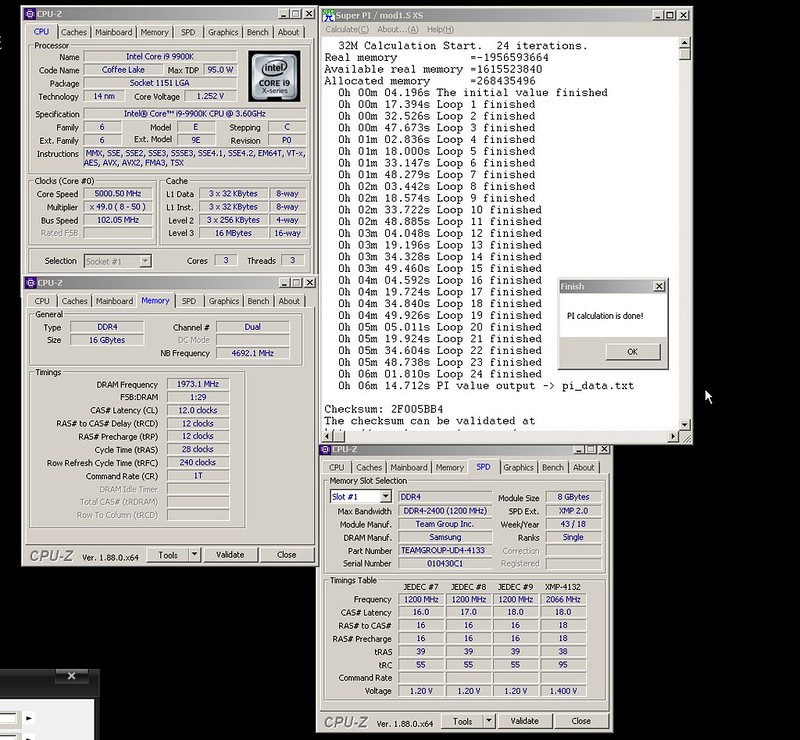

6560 MHz CPU LN2 and RAM 3900+ MHz cl12
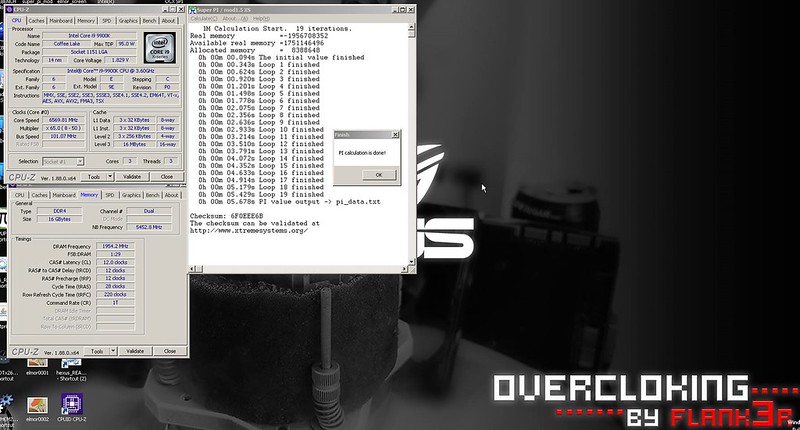
Superpi 32M frozed behind half of test
CONCLUSION
TeamGroup is one of the stable players on the market, is not the bigest one, but in hands of OC guys very popular. The T-Force Xtreem is not about colorfull design, not about RGB, but about practicality and functionality. As exmaple there is really massive heatsink, with voltage around 2V there were not some higher heating. Even the design is good and looks perfect on darker motherboards.
We will summarize the results in the table bellow, because not all of you will probably click through and compare individual pictures :-)

- one anomaly in 3D Mar11 CPU test, I don't know what it is ... The rest otherwise always scaled for the better
Even though the memories have a revision of the A0 B-die Samsungs, they still do not lag behind the newer A1 chips. Given the reasonable price, the OC capabilities around 4500 MHz with reasonable timing and voltage, I have to evaluate the memory very high. If you don't need RGB, then it may be your right choice.

Last edited by FlanK3r; 07-25-2019 at 05:57 AM.
ROG Power PCs - Intel and AMD
CPUs:i9-7900X, i9-9900K, i7-6950X, i7-5960X, i7-8086K, i7-8700K, 4x i7-7700K, i3-7350K, 2x i7-6700K, i5-6600K, R7-2700X, 4x R5 2600X, R5 2400G, R3 1200, R7-1800X, R7-1700X, 3x AMD FX-9590, 1x AMD FX-9370, 4x AMD FX-8350,1x AMD FX-8320,1x AMD FX-8300, 2x AMD FX-6300,2x AMD FX-4300, 3x AMD FX-8150, 2x AMD FX-8120 125 and 95W, AMD X2 555 BE, AMD x4 965 BE C2 and C3, AMD X4 970 BE, AMD x4 975 BE, AMD x4 980 BE, AMD X6 1090T BE, AMD X6 1100T BE, A10-7870K, Athlon 845, Athlon 860K,AMD A10-7850K, AMD A10-6800K, A8-6600K, 2x AMD A10-5800K, AMD A10-5600K, AMD A8-3850, AMD A8-3870K, 2x AMD A64 3000+, AMD 64+ X2 4600+ EE, Intel i7-980X, Intel i7-2600K, Intel i7-3770K,2x i7-4770K, Intel i7-3930KAMD Cinebench R10 challenge AMD Cinebench R15 thread Intel Cinebench R15 thread
Tags for this Thread
 Posting Permissions
Posting Permissions
- You may not post new threads
- You may not post replies
- You may not post attachments
- You may not edit your posts
-
Forum Rules





























































 Reply With Quote
Reply With Quote


Bookmarks